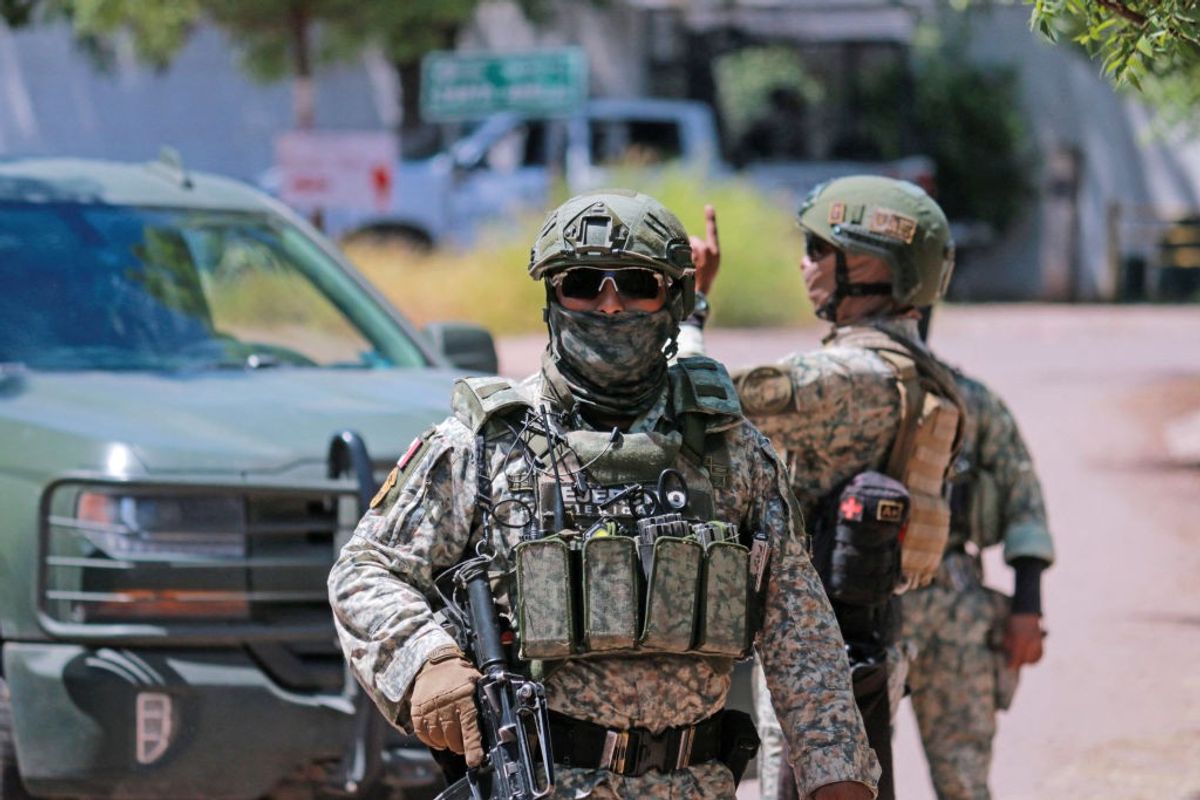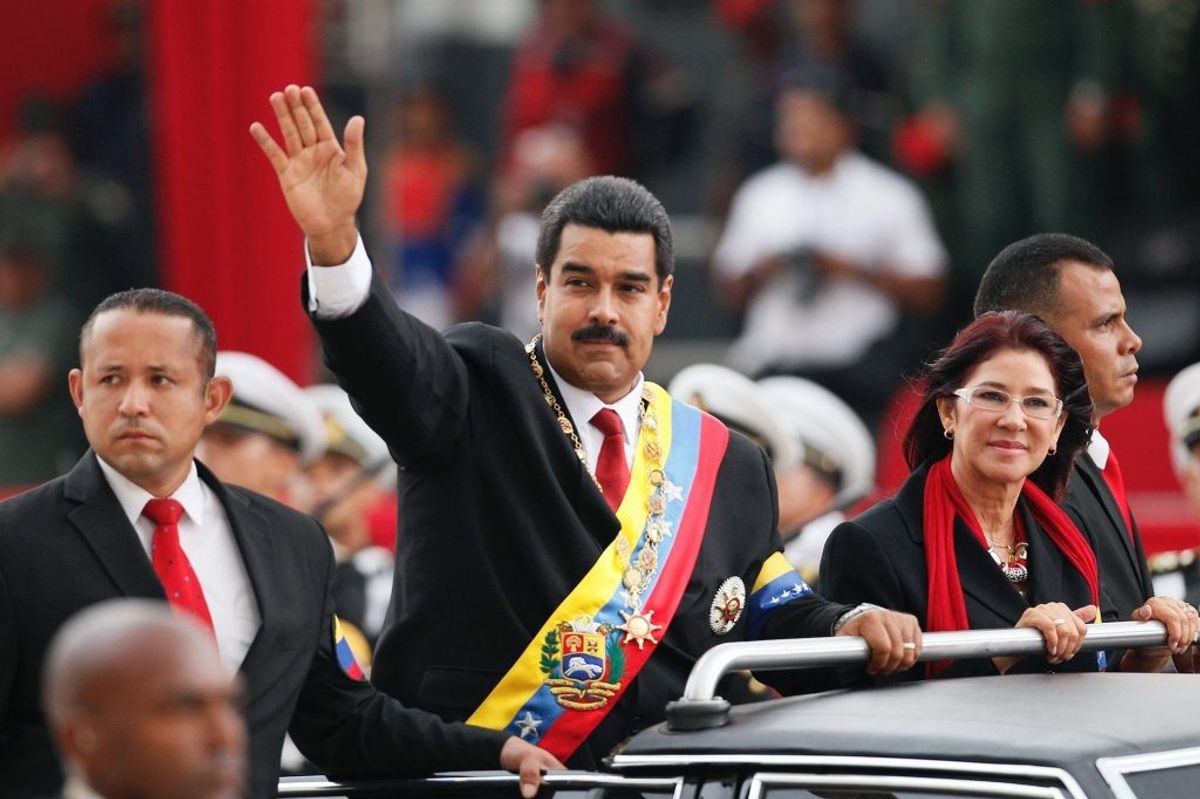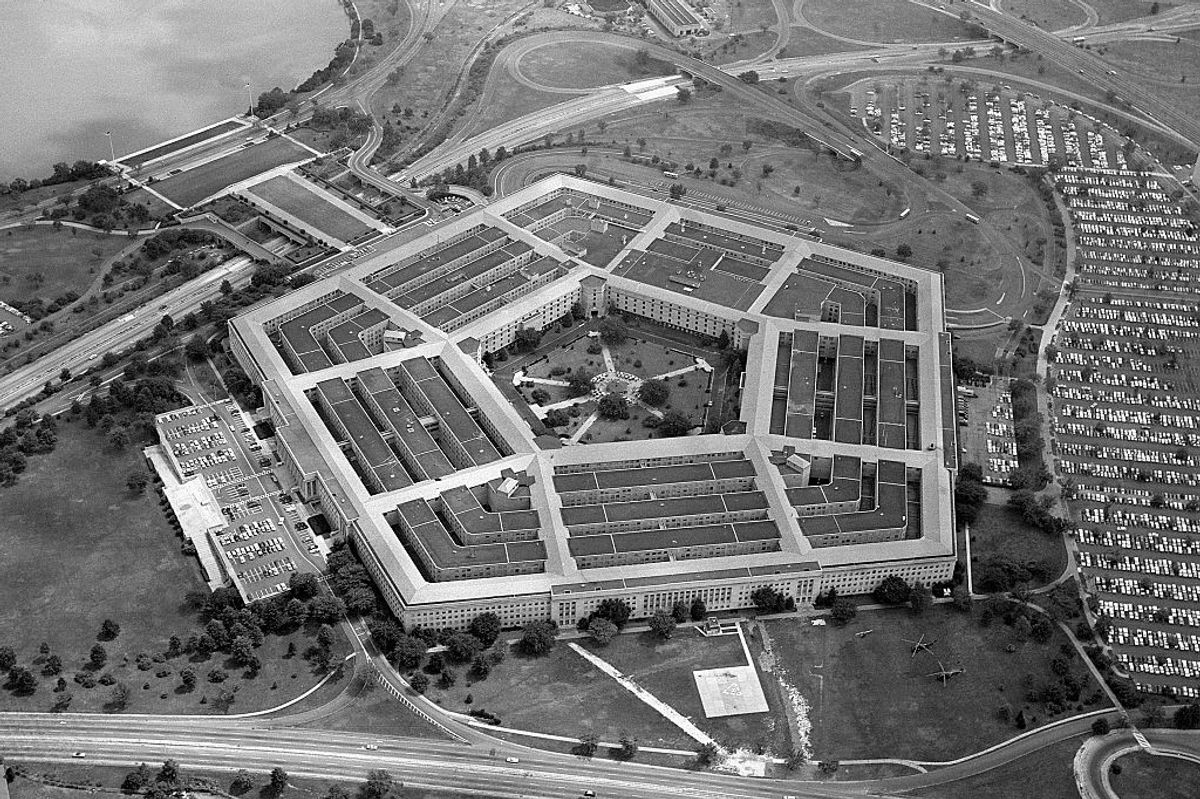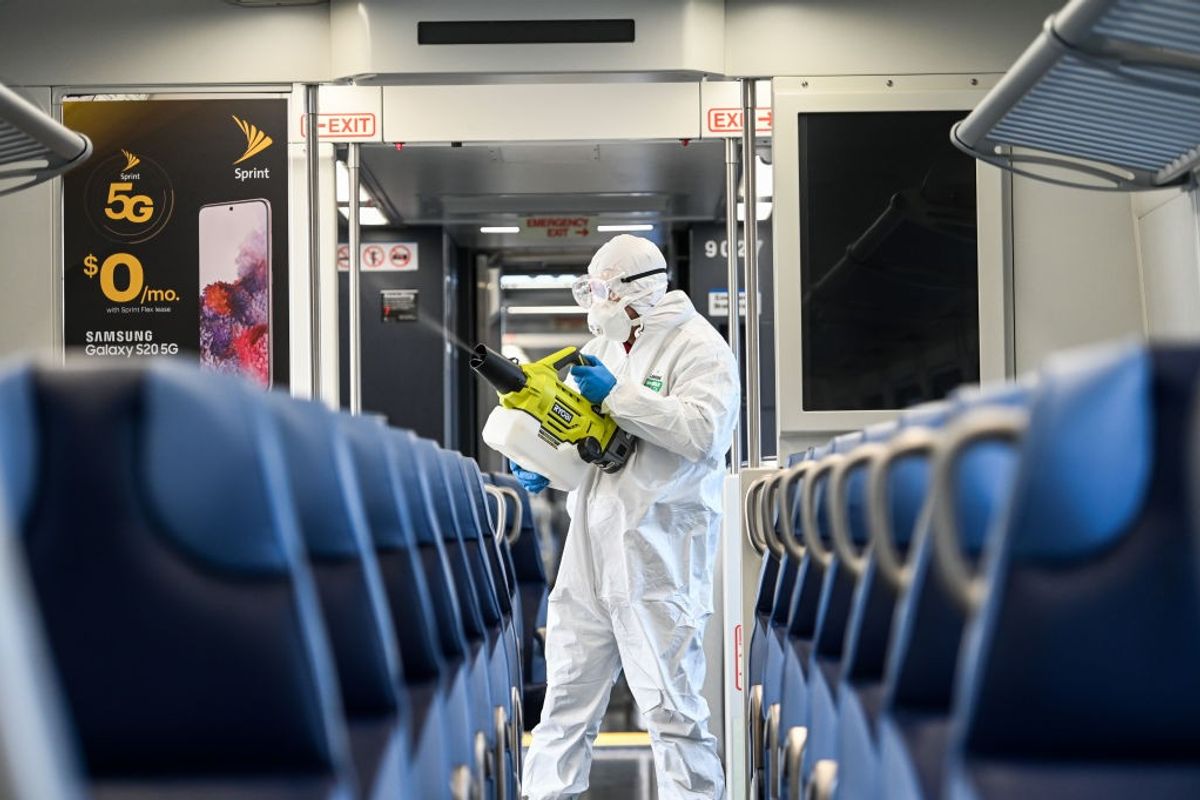DEEP DIVE — Eight weeks ago, Secretary of State Marco Rubio went to Mexico City, the epicenter of the global illegal drug trade, and declared, “The president of the United States is going to wage war on narco-terrorist organizations.”
Since then, the administration’s military counter-drug offensive in Latin America and the Caribbean has destroyed at least 15 small boats and killed at least 61 people – but none of them were drug kingpins or senior, irreplaceable figures in the transnational organized crime cartels that make and move fentanyl and other lethal opioids that have killed hundreds of thousands of Americans.
“Targeting fast boat operators will not stop major drug trafficking kingpins from sending multi-ton quantities of drugs to our country and around the world,” Michael Chavarria, a former DEA supervisor who spent 26 years investigating drug cartels in Mexico, the Caribbean and the Southwest border, told The Cipher Brief. “The drug trade is the most profitable business in the world, without equal. The minions currently targeted on the high seas will continue risking their lives because kingpins pay them more than they could ever earn pursuing legal options. Now, on the high seas, they’re being extrajudicially murdered, in a campaign that will have no impact on the global drug trade.”
Like other veterans of the DEA, Chavarria suspects that if the boats blown up so far contained contraband, it was likely marijuana or cocaine, a stimulant manufactured in Colombia from coca plants grown in Colombia, Peru and Bolivia. Many of the small boats plying the Caribbean are believed to be supplying the European market, where cocaine brings double or triple U.S. prices. While hardly benign, cocaine is not considered a major overdose danger, and it has fallen out of fashion among many American drug users, who have increasingly turned to far riskier substances — particularly fentanyl, a synthetic opioid painkiller much stronger than heroin, and the synthetic stimulant methamphetamine. Both are manufactured mostly in Mexico, in cartel “superlabs,” with precursor chemicals imported from China and India.
“I doubt these decisions [to attack small boats] involve input from DEA leadership, who I believe serve the American public as best as resources allow,” Chavarria said. “Instead, let’s focus on the Chinese fentanyl sources responsible for threatening our citizens’ lives. The new deadly triangle is China-Mexico-United States.”
Despite objections from Congress, legal scholars and foreign governments, President Trump has announced he may soon authorize strikes inside Venezuela. Many experts believe his agenda in that country is about forcing President Nicolas Maduro out of office, rather than stopping drugs, because Venezuela is not known for producing massive quantities of illegal drugs. The U.S. government's most authoritative annual intelligence assessments – the Drug Enforcement Administration’s National Drug Threat Assessment and the State Department’s International Narcotics Control Strategy Report – characterize Venezuela as a transshipment hub. Maduro himself and a number current and former Venezuelan officials were indicted in 2020 for conspiring with Colombia’s leftist FARC insurgents to transport cocaine produced in the guerillas’ jungle labs in Colombia.
The problem is in Mexico
The world’s richest, most powerful drug lords are Mexican citizens, with well-armed private armies, dynasties and bases of operations nestled deep in the Mexican countryside. Mexican president Claudia Sheinbaum has absolutely ruled out the idea of American boots on Mexican soil. Will the U.S. defy her wishes by ordering American armed drones or special operations teams into Mexico to conduct unilateral commando raids? So far, Trump and his senior advisors have not signaled that such incursions are imminent – but they’ve never said never. In Ecuador two months ago, Rubio said the administration would continue to target and kill suspected traffickers without their homelands’ consent, if those countries didn’t participate in Trump’s new war on drugs by mounting their own attacks on cartels. “For cooperative governments, there’s no need because those governments are going to help us,” he said. “They’re going to help us find these people and blow them up, if that’s what it takes.”
Mexican security forces have repeatedly tried and failed to arrest El Mencho, real name Nemesio Rubén Oseguera Cervantes, Mexico’s kingpin of kingpins. Oseguera is the 59-year-old founder and leader of the Cartel de Jalisco Nueva Generación (CJNG), Mexico’s, and the world's most successful and feared organized crime enterprise. The CJNG, which emerged from the western state of Michoacán, famed for its avocados, is now a multinational billion-dollar business with a presence in nearly every state in the U.S.and at least 40 countries, according to DEA’s National Drug Threat Assessment. The U.S. has put a $15 million bounty on Oseguera’s head.
“The CJNG is probably the wealthiest criminal group in the world, maybe even more than the IRGC [Islamic Revolutionary Guard Corps] in Iran,” Paul Craine, formerly DEA’s regional director for Mexico, Central America, and Canada, told The Cipher Brief. “It’s the biggest terrorist organization in the Western hemisphere. The CJNG is now right on the border, which no one ever expected. Plus, they have the U.S. infiltrated with their elements for smuggling guns, drugs and other businesses.”
Reward poster for information leading to the arrest and/or conviction of “El Mencho”. (State Department)
In second place is the older, fragmented but still powerful Sinaloa cartel. Sinaloa cartel leaders Ivan Archivaldo Guzmán Salazar and Jesus Alfredo Guzmán Salazar, known as the Chapitos, are sons of the infamous cartel founder Joaquín "El Chapo" Guzmán, now serving time in a U.S. prison. They are credited with creating the fentanyl craze by promoting it in their distribution systems, alongside cocaine, meth and marijuana. The U.S. is offering rewards of $10 million apiece for them.
In an interview with The Cipher Brief, Rep. Dan Crenshaw, R-Tex., who recently led the Congressional task force on cartels to Mexico to confer with Sheinbaum’s senior security officials, said he would not advise Trump to try a unilateral incursion on Mexican soil without that nation’s full agreement and active participation. Such an act would explicitly violate the two nations’ joint agreement signed last month pledging “respect of sovereignty and territorial integrity.” Both nations promised to fight drug trafficking and other crimes “each in our own territory,” Mexican foreign secretary foreign secretary Juan Ramon de la Fuente emphasized.
To dismantle the cartels and destroy their sanctuaries in Mexico, Crenshaw, a former lieutenant commander in the Navy SEALs, and other members of Congress are pushing for a massive joint U.S.-Mexico initiative modeled on the U.S.-Colombian military-intelligence relationship in the 1990s and early 2000s. In those operations, Colombian commandos were the point of the spear, with advisors and trainers from U.S. special operations, the Central Intelligence Agency, National Security Agency and the U.S. Drug Enforcement Administration working behind the scenes, providing training, communications intercepts, human intelligence, tracking technology, financial analyses and other technical assistance. As a result, in 1993, the joint effort tracked signals from a radio phone wielded by legendary Medellin cartel founder Pablo Escobar to the roof of a dingy building in downtown Medellin. A Colombian military marksman shot him dead. The rest of the Medellin cartel crumbled. By 1995, the Cali cartel had fallen. FARC guerillas soon stepped into the breach by setting up jungle labs and taking over the cocaine manufacturing business. The CIA covertly supplied U.S.-made precision-guided munitions that the Colombians used in a series of air strikes that decimated the FARC leadership. In 2016, surviving FARC guerillas made a peace accord with Bogotá and agreed to demobilize.
Need a daily dose of reality on national and global security issues? Subscriber to The Cipher Brief’s Nightcap newsletter, delivering expert insights on today’s events – right to your inbox. Sign up for free today.
What the fight would look like
Any commando team that tries to take on Mexico’s drug bosses and their large, well-armed paramilitary forces can expect ferocious resistance financed by very deep pockets. CJNG territory covers thousands of square miles in the western Mexican state of Michoacán, where Oseguera was born, and in neighboring Jalisco state. His domain is rugged countryside, dotted with ranches and laced with hidden trails, caves and mines. Oseguera has even built his own hospital, according to DEA intelligence, so he can undergo treatment for chronic kidney disease.
The Chapitos are similarly well-protected in Sinaloa state. Experts warn that a joint Mexican-U.S. special operations assault would raise the specter of possible “blue-on-blue”or “green-on-green” firefights a with corrupt elements of Mexico’s security forces defending the narco leaders. “They travel in hordes of security,” says a senior DEA agent who has investigated them for many years. “And not just hordes of security, but you're talking about a paid-off military that's protecting them, paid-off police protecting them. The corruption is just so rampant, and this is why a lot of these people can't get caught.”
“Whether you call it counterterrorism or counterinsurgency, that is what we're dealing with in Mexico,” Crenshaw told the Cipher Brief. “They use terroristic tactics. They terrorize their own people. They are an insurgency, in the sense that they're integrated into every level of society, from government to their own military, to security, to pop culture… The Mexican military has some very, very elite units that I think would be respected anywhere in the world. But there's not many of them. They need more, and additional training, additional pipelines into those elite units. Basic aircraft, ISR [intelligence surveillance reconnaissance], close air support, things that are largely lacking. When they do go into these very dangerous areas and try to go after some of these dangerous kingpins, they're doing so without the kind of support that U.S. special operations would be used to.”
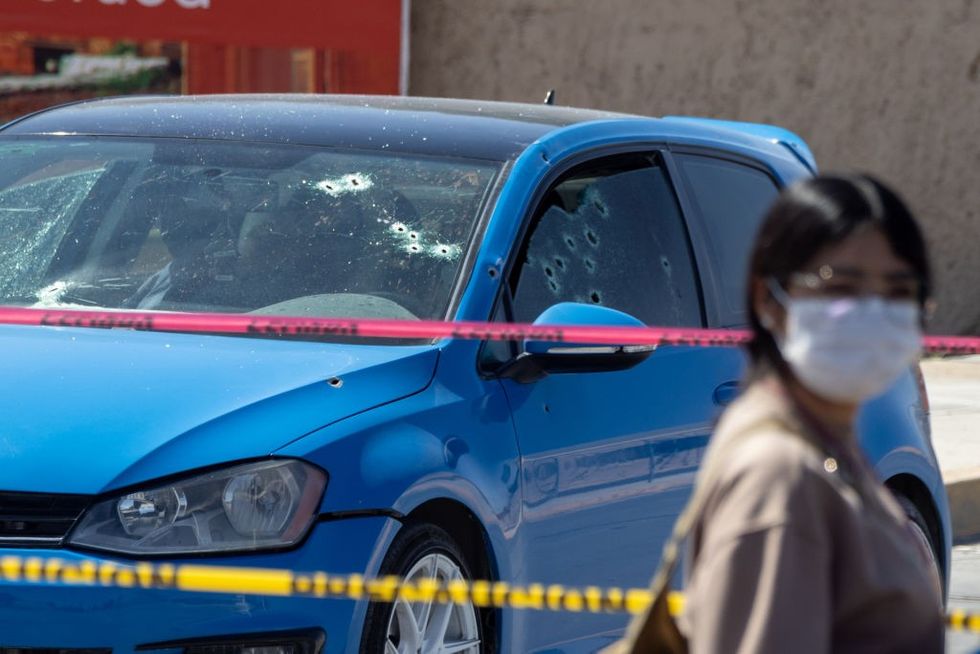
The CJNG’s defenses are considered particularly militarized and formidable. According to current and former U.S. officials who have investigated the cartel, Mencho roams about his domain via four-wheel-drive convoys or small aircraft, always surrounded by large numbers of heavily-armed paramilitary fighters who wear insignia identifying them as FEM, Fuerzas Especiales Mencho or Grupo X, which specializes in fighting rival cartels. Like Osama Bin Laden, he avoids using phones and instead uses messengers.
For a commando team, armed drone or precision-guided munition to find Mencho and his party, precise GPS coordinates would be needed, and they’ll be hard to come by.
“He moves pretty often,” a U.S. expert who has recently assessed the kingpin’s vulnerabilities told The Cipher Brief. “So the intelligence on his location would have to be extremely good. Which it’s not.”
Whether surveillance drones could obtain reliable coordinates on Mencho’s position in real time is questionable. “Where Mencho is hiding they can hear drones coming,” the U.S. expert said. “It’s so quiet out there there’s no noise pollution. They’ve been successfully avoiding SEMAR’s drones for years.” SEMAR is U.S. military shorthand for a Mexican navy/marines special operations unit that has trained with the U.S. Navy SEALs and worked closely with the U.S.
The cartel has its own drone unit, called the Operadores Droneros, complete with badges. Cartel operatives also set up security cameras, like hunting cameras, to detect the presence of outsiders.
“They have a lot of early warning capability,” said Chavarria, who used to run the DEA’s office in Guadalajara, the capital of Jalisco, then ran investigations of the Gulf cartel out of Houston. “I don't think that we have the type of precise intelligence that would allow us to effect an operation. And even if it's available, it's time-sensitive, it's perishable. If you're not there on top of your objective, you're going to miss. And then there's going to be gunfights and a lot of innocent people are going to get killed. Mencho hangs out in cities, he bounces around because he's untouchable. He's got police escorts, he's got state cops and municipal cops protecting him. His men have ringed perimeters of security, where they're communicating with one another on various frequencies that are digitally encrypted. So it's very difficult for the U.S. to crack those encryptions, and obviously for the Mexican security forces as well.”
According to Chavarria and other current and former officials, the CJNG has extensive counter-surveillance capabilities. Cartel security officers, known as sicarios, literally, assassins, issue mobile phones with heavily encrypted voice-over-internet and radio-over-internet apps to hundreds of human lookouts, called halcones, meaning hawks, spies, who are under orders to report any strangers showing up in cartel territory.
Are you Subscribed to The Cipher Brief’s Digital Channel on YouTube? There is no better place to get clear perspectives from deeply experienced national security experts.
Mexican security forces have been driven back every time they’ve tried to get close to Mencho. Notoriously, on May 1, 2015, a Mexican military helicopter that flew over his convoy in Jalisco state was shot down by the cartel paramilitary force with an Iranian-made rocket-propelled grenade and .50 caliber belt-fed machine gun. Nine Mexican soldiers and federal police died, and others were severely wounded. Rubén Oseguera González, AKA Menchito, Mencho’s California-born son and second-in-command, then 25, was accused of ordering the attack on the helicopter. The Mexican military and police mounted a massive operation to track him to a wealthy suburb of Guadalajara. Menchito was extradited to Los Angeles, prosecuted for violating U.S. drug laws, convicted last September and on March 7, sentenced to life plus 30 years in a U.S. prison.
The U.S. victory was short-lived. Mencho’s stepson Juan Carlos Valencia González, a California-born U.S. citizen who is the son of Oseguera’s wife, Rosalinda González Valencia and has emerged as Mencho’s heir-apparent. A leader in the cartel’s elite commando force, he’s known as R-3. The U.S. is offering a $5 million reward for him. ( His mother Rosalinda, AKA La Jefa, comes from a powerful cartel dynasty, the Valencias. Her uncle is Armando Valencia, AKA El Maradona, founder of the Milenio Cartel, the predecessor of the CJNG. A major player in her own right, Rosalinda spent time in a Mexican prison for money laundering but was released last February, according to news reports in Mexico.)
Sheinbaum has convinced many in Washington that she is sincere in her determination to break the power of the cartels, especially the CJNG, which has menaced her administration unceasingly.
In 2020, Sheinbaum’s trusted advisor Omar García Harfuch, then Mexico City’s chief of police, narrowly survived a CJNG assasination attempt. Sheinbaum was Mexico City’s mayor at the time. When Sheinbaum became president in October 2024, she named Harfuch national security minister and accelerated military raids on CJNG labs and other sites.
But so far, the cartel has proved stronger. Last March, Mexican soldiers and national guardsmen driving in a convoy near CJNG territory on the border between Jalisco and Michoacán states were ambushed, and six security force officers and three CJNG hitmen were killed. Three days later, security forces in the area were again ambushed, two of their number killed and the rest forced to retreat.
On May 1, exactly 10 years to the day after the helicopter downing, Oseguera staged a flamboyant retribution for the incarceration of his son Menchito. Iván Morales Corrales, a Mexican policeman who survived the crash, badly burned, was decorated as a national hero and testified against Menchito in the U.S. trial in Los Angeles, was gunned down with his wife while driving on a quiet street in a town far from the CJNG’s turf. This was an unmistakable statement that the cartel could reach anyone, anywhere, anytime.
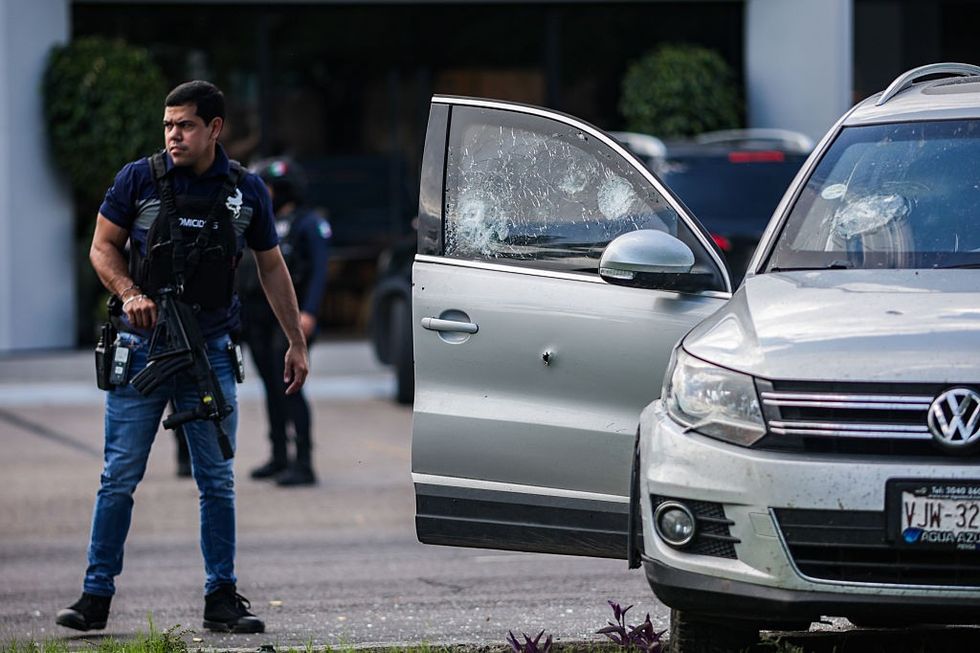
Derek Maltz, who served as DEA administrator until June and before that ran the agency’s elite Special Operations Division for a decade, believes that if the Mexican army fails to mount more operations against the CJNG and other cartel strongholds, the Trump team will seriously consider unilateral operations, despite Sheinbaum’s vocal objections. “If the U.S. government doesn't perceive that Mexico has the will or capabilities to literally take them off the playing field, I wouldn't be surprised that the administration is looking at targeted strikes on the [cartel] leadership,” Maltz told The Cipher Brief. “ I would personally encourage it. The president has made it clear that he's going to place American families first, trying to keep everyone safe and secure. So if it means taking out some kingpins in the narco-terrorist world, I would fully support that.”
As a practical matter, a raid or two wouldn’t solve the problem. Mexico’s cartels, like major corporations, could survive the loss of a few key executives. “Killing Mencho would be significant, but it's not going to take out the organization,” Craine said. “You're going to have to have sustained operations against the whole network.”
A global syndicate of evil
The CJNG has built out a complicated and durable executive structure in recent years as it has gone global and diversified.
“Mencho is expanding around the world,” Maltz told The Cipher Brief. He and his allies “have recognized the threat to their business enterprise with the increased attention by the Trump administration. So they're adjusting strategies, realigning, identifying new partnerships, being strategic in some of their global routes and capitalizing on the market in different areas of the world.” Maltz and other DEA veterans say Mencho has cemented international alliances with organized crime syndicates, from motorcycle gangs in the U.S to the Japanese Yakuza. When the profits to be made from human trafficking dwindled due to the Trump administration’s crackdown on the border, the CJNG developed other robust cash streams, including stealing fuel from the Mexican oil company PEMEX and other energy outlets, extorting avocado farmers, and even smuggling mercury, a pricey, poisonous by-product of gold-mining, according to the DEA and news reports.
“The CJNG is the first international criminal conglomerate,” Craine said. “It’s the first ICC to operate worldwide and to have criminal control of legal commodities and services as well, such as oil, gasoline, minerals, chemicals, timber, government funding, infrastructure and resources, armed forces, weapons, politics, police services, judicial systems, international financial services, and so forth.”
What’s most alarming is the significant CJNG and Sinaloa cartel presence in the U.S.
“What we face today in Southern California is a full-scale infiltration by foreign criminal empires, the Sinaloa cartel and the Jalisco New Generation cartel – paramilitary organizations with global supply chains, corporate level logistics, and battlefield tactics,” Matthew Allen, DEA’s chief of operations, told the Senate Judiciary committee last June.
Allen testified that a few weeks earlier, a DEA team had raided an old warehouse in downtown Los Angeles, a few blocks from the agency’s big Southern California office. Hidden inside, the agents discovered, was a luxurious CJNG safe house with places for cartel operatives to lounge, a pool table, polished floors and, presiding over it all, a floor-to-ceiling mural of El Mencho, depicted in a bulletproof vest emblazoned with the CJNG insignia and Mencho’s personal symbol, a bloody cockfight.
It was, Allen said, “a shrine, not hidden in the jungle or some remote compound but right in the heart of the heart of America’s second-largest city. The message was clear: ‘We are here. We are among you’.”

Image of Cartel de Jalisco Nueva Generación safe house in Los Angeles.(DEA Official)
Read more expert-driven national security insights, perspective and analysis in The Cipher Brief because National Security is Everyone’s Business.


